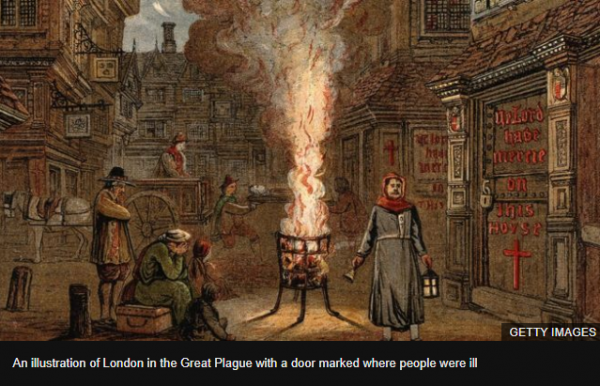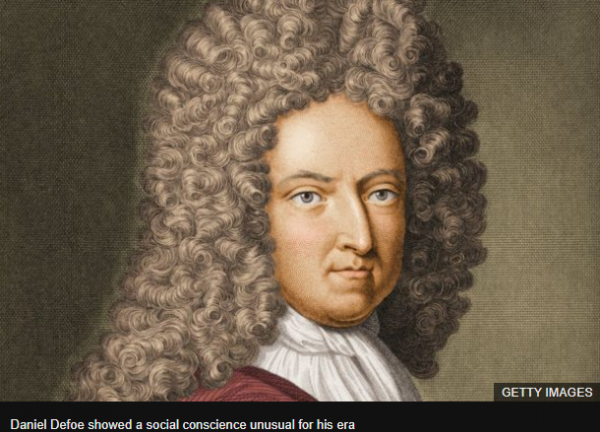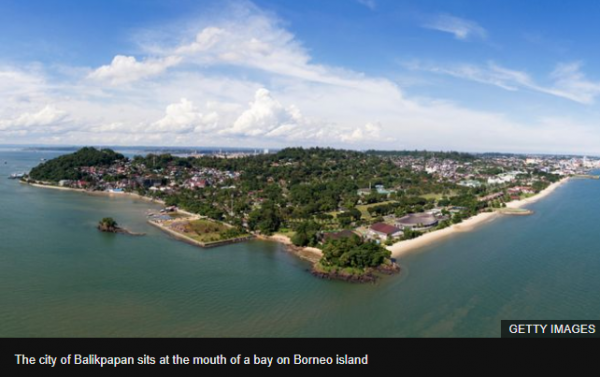-
Posts
20,849 -
Joined
-
Last visited
-
Days Won
49
Everything posted by CaaC (John)
-
They might have got the place going a bit I presume...I think
-
I take it all these guys were on the old Forum? how come they never moved across into here? This @Vegan Kel has vanished, last September he was on line I think but I am sure someone in here said he had been banned for remarks about the Holocaust was fake?
-
Not sure, I can remember someone saying he got fed up with a few members so called it a day, can't say if that's true or not so don't take my word for it, I found him ok though.
-
I think he has listened to a few of us who said to go and take a long break and then contribute as before and don't close his account down what he suggested, he had a brainstorm, let loose at @Stan and rightly paid the penalty for his outburst, we can all criticise and slag each us off but not members of your family who do not post in here. Other than that I still see he pops in here to have the occasional read, I got on alright with the guy and he is a Beatles fan like me so that says something, hopefully, he will ease his way back into TF365 and post again, he has made an apology and I think it has been accepted so it's done & dusted for me and we should carry on as normal.
-

Newcastle United Discussion
CaaC (John) replied to a topic in Premier League - English Football Forum
-
They have this on a few other long-running Forums around the Net but it's really for members that were long-running members for years then suddenly disappeared and stopped posting, I have not been in TF365 for as long as you other guys but I can still mention a few that just stopped posting. We all know what happened to Teso, he got banned for going a bit overboard in pm's to Admin/Mods but on his day he made me laugh and then cry with some of his posts, then SirBalon just packed his bags and closed his account down, I do miss his threads and posts. Then we had members that suddenly returned from the old Forum which I was not around then like @Walker aka @Cure who started posting again last year and then stopped posting, the same as @Large who returned last year and then just stopped posting. Anybody remember any members that posted a lot on the old TF365 Forum and even in here that have just suddenly stopped posting that you miss (post contributions).
-
It's weird but a lot of people nowadays can get decent photos on a decent mobile and you don't have to go into one of these shops and get photos runoff, all I do if I take any pictures and want to keep them I just forward them onto my MSN photo album and if I want to run any off then all I do is use my printer and scanner, I have some lovely shots of the grandsons and family, coloured and enlarged and then framed hanging or sitting around in here. The wife's cousins hubby did all the old fashioned photography bit with darkroom the lot and he was bloody good at it, I would still like to get a camera the daughter has and takes some brilliant photos with it and downloads them onto her MSN album.
-
I took that photo in 2017, that was one of a few in my photo album from 2017, like the other one below
-
Yesterday, 1902 Today, 2017
-
Photography is like art to me and I love both, I have a love for old black & white photos from years gone by, they haunt me when I look t the people in the photo staring at the camera and you can just imagine them thinking "what is that box thing on a stand with the guys head under a canvas and what is he doing?" The Gaiety Theatre, Kirkgate, Leith, Edinburgh in the late 1800s or early 1900s
-
Cloudy and sunny here but I can smell rain in the air.
-
What can we learn from Robinson Crusoe writer's 1722 plague book? More than 300 years ago London was in the grip of the Great Plague. Robinson Crusoe writer Daniel Defoe's account about this time - A Journal of the Plague Year - was an early example of faction, which was written afterwards but based on detailed research. And its story of self-isolation and social distancing feels familiar to us right now. When the Great Plague broke out in 1665 Defoe was just a child. The book he wrote as an adult was a blend of research, personal memories, imagination and possibly of stories told by an uncle who'd stayed in London throughout. Yet it's become the classic account, with scenes and observations which ring true for readers in 2020. Today's commentators have pointed out how different our experience of Covid-19 would have been before the social media revolution. In 1722 Defoe reminded his readers that when he was a child newspapers barely existed. But his skill as a writer gave them a detailed picture of the effects of bubonic plague on a community without health services working to support it. Early in the novel, Defoe writes: "The face of London was now indeed strangely altered... The voice of mourning was truly heard in the streets." Defoe was a stranger to the two-metre rule. But the practicalities of his narrator's daily life feel all too familiar. Dr Paula Backscheider of Auburn University in the US is a Defoe expert. She says his writing was so impressively researched that it remains vivid three centuries later. "It's what New Journalism gave us in the 1970s, with people like Tom Wolfe. There are the unusually deep research and a wealth of anecdote with interviews and the human interest stories which history so often ignores." She suggests a parallel between Defoe and those who warned the world wasn't prepared to fight something like Covid-19. "His book came out in 1722 and there had been a terrible plague in Marseilles just before that with at least 40,000 deaths. He was using the lessons of the 1660s to warn his own day." The book starts with a basic question frequently asked earlier this year - where has this disaster come from? "...it was brought some said, from Italy... others said it was brought from Candia (Crete); others from Cyprus. It mattered not from whence it came...," writes Defoe. Defoe records how each house which contained a plague victim was sealed up, with a red cross painted on the door. In theory the family there wasn't allowed out but Defoe records instances where guile or violence or bribery allowed them to escape. And the question soon arises of self-isolation for even the healthy. "And finding that I ventured so often out into the streets, he (a friend) earnestly persuaded me to lock myself up and my family and not to suffer any of us to go out of doors," writes Defoe, continuing, "but as I had not laid in a store of provisions it was impossible that we could keep within doors entirely..." Defoe also anticipates our contemporary concern with asymptomatic carriers. "One man, who may have really received the infection, and knows it not, but goes abroad and about as a sound person, may give the plague to a thousand people, and neither the person giving the infection nor the persons receiving it know anything of it," he says. And he describes how shopkeepers devised a 17th Century form of contactless payment. "The butcher would not touch the money but had it put into a pot full of vinegar, which he kept for that purpose. The buyers carried always small money to make up any odd sum, that they might make no change. They carried bottles for scents and perfumes in their hands." Dr Backscheider says most historians accept Defoe's picture of the nightmarish effects bubonic plague had on London. "I think he was much more a journalist than a novelist and he never exaggerates. He's not setting out to chill the blood - the reality was frightening enough. Sociologists and epidemiologists quote him as a source." And she thinks one of the reasons the book speaks to us in the current crisis is that Defoe took science seriously. "An author from the Renaissance would have said what had happened was God's work. But the narrator in the book - who's only ever known as HF - is obsessed with observing and recording in a scientific way. "In the story, he knows he should leave London but, as with Defoe, there's an intellectual engagement and a need to know what had caused the plague. "The writing feels modern and the book had things to say to us even before what has happened this year." Almost all we learn of HF is that he's a well-off, middle-class saddler. Defoe shows a social conscience rare for his era in suggesting that working-class people were the most likely to suffer. "It must be confessed, that though the plague was chiefly among the poor, yet were the poor the most venturous and fearless of it, and went about their employment with a sort of brutal courage... Scarce did they use any caution, but ran into any business they could get employment in..." Towards the end of 1665, the death count diminished, reducing erratically but then almost to zero. Defoe is too honest a writer to supply an easy explanation to end his story with: it would be many decades before plagues began to be understood. But he'd written a brilliant account of the last major outbreak of bubonic plague in Britain - and it can still educate readers three centuries later. https://www.bbc.co.uk/news/entertainment-arts-52353832
-
Peppermint (2018), not bad a bit like watching a female Arnold Schwarzenegger 8/10.
-
While Visitors Are in Quarantine, Museums Are Sharing Their Creepiest Objects on Twitter Though they may not be open to visitors during the COVID-19 crisis, museums around the world are finding ways to keep busy. Earlier this month, the UK's Yorkshire Museum challenged museums on Twitter to share the creepiest objects in their collections. The Yorkshire Museum kicked off the #curatorbattle on April 17 by tweeting a picture of a hair bun recovered from a Roman tomb dating back to the 3rd or 4th century. Since then, dozens of institutions have participated. The Egham Museum in the UK contributed an antique doll with a balding, cracked head that's simply labelled "MC 294." From the British Toy Museum of Penshurst Place came a red-eyed stuffed bear that pretends to drink when you feed it coins. The winner, at least based on Twitter's response, maybe "The Mermaid" of the National Museums of Scotland's Natural Sciences department. The unsettling monstrosity was one of many monkey-fish taxidermy hybrids made popular by P.T. Barnum. This isn't the first time museums have used social media to show off some of their more unusual items. In October of last year, the History Center of Olmsted County in Rochester, Minnesota, held a contest to determine which of the antique dolls in its collection was the creepiest. This latest challenge is not only a chance for museums to spotlight some underrated objects but also to connect with the public when people are stuck at home. If you think you can stomach it, you can view even more freaky museum objects under the hashtag #curatorbattle. For a more pleasant virtual museum experience, here are some world-class institutions you can tour online. https://www.msn.com/en-gb/news/offbeat/while-visitors-are-in-quarantine-museums-are-sharing-their-creepiest-objects-on-twitter/ar-BB136ajq
-
Hubble celebrates 30 years in space with a gorgeous landscape of stars Happy Birthday, Hubble! To celebrate the telescope’s three decades in space, the team of researchers behind the Hubble have released an amazing new image of two nebulas in the Large Magellanic Cloud, a smaller galaxy about 163,000 light-years from our Milky Way. The larger, red nebula is NGC 2014, and the bright, newly formed stars at its heart are 10-20 times the size of the Sun, according to NASA. The blue nebula, NGC 2020, was formed when a star 200,000 times larger than our Sun ejected a huge amount of gas. Researchers thought the image looked a lot like a coral reef, titling the resulting picture ‘Cosmic Reef.’ “It’s Hubble’s exquisite vision from its orbit above Earth’s atmosphere that gives us the ability to get a clear glimpse of this kind of incredible beauty and activity.” Jennifer Wiseman, Hubble Senior Project Scientist said in a video made to accompany the image’s release. But 30 years ago, when it launched, the telescope wasn’t in great shape. “A tiny imperfection in the mirror meant that all of the images it took were fuzzy and out of focus, and it took five separate repair missions to get it to the excellent shape it’s in today.” Sean O’Kane wrote for the Hubble’s 25th anniversary. SLIDES - 1/25 “It was revolutionary to launch such a large telescope 30 years ago, and this astronomy powerhouse is still delivering revolutionary science today.” Thomas Zurbuchen, associate administrator for science at NASA said in a statement. “Its spectacular images have captured the imagination for decades, and will continue to inspire humanity for years to come.” https://www.msn.com/en-gb/news/techandscience/hubble-celebrates-30-years-in-space-with-a-gorgeous-landscape-of-stars/ar-BB13aEjs
- 1,657 replies
-
- space exploration
- astronomy
-
(and 1 more)
Tagged with:
-
And I think I will have some more of my amber nectar today.
-
Hubble telescope celebrates 30 years of stunning science It's 30 years ago to the day that the Hubble Space Telescope was launched. Famously blighted by the blurred vision at the outset, the observatory was eventually repaired and upgraded. The remarkable pictures it has taken of planets, stars, and galaxies have transformed our view of the cosmos. Indeed, there are those who think Hubble is the most important scientific tool ever built. It's still far from retirement. The US space agency (Nasa), which runs the observatory in partnership with the European Space Agency (Esa), says operations will be funded for as long as they remain productive. Last year, its data resulted in almost 1,000 scientific papers being published - so it continues to stand at the forefront of discovery. And as if to emphasise this point, astronomers promise a fascinating new image from the telescope on Friday as part of the 30th birthday celebrations. FULL REPORT
- 1,657 replies
-
- space exploration
- astronomy
-
(and 1 more)
Tagged with:
-
This made me and the wife laugh our socks off and then we both said "Fuck this virus and the lockdown"... The wife talking to our daughter on the phone and the daughter said she took wee Kaiden for a walk for 15 minutes and he spotted an old couple, husband & wife walking along and said to Denise "Mummy, I miss visiting grannie & granddad and staying around there for a sleep in, I just don't understand what this virus thing is about where I can't go and give grannie a hug and play games with granddad"
-
Tsunami risk identified near the future Indonesian capital Scientists have identified a potential tsunami risk in the region chosen by Indonesia for its new capital. The researchers mapped evidence of multiple ancient underwater landslides in the Makassar Strait between the islands of Borneo and Sulawesi. If the largest of these were repeated today, it would generate tsunami capable of inundating Balikpapan Bay - an area close to the proposed capital. But the international team cautions against an overreaction. "We still have a lot more work to do to properly assess the situation. That said, this is something that Indonesian governments probably should have on the risk register somewhere - even if we're only talking about 'low frequency, high impact' events," said Dr Uisdean Nicholson from Heriot-Watt University, UK. His British-Indonesian research team used seismic data to investigate the sediments and their structure on the Makassar seafloor. The survey revealed 19 distinct zones along the strait where mud, sand and silt have tumbled downslope into deeper waters. Some of these slides involved hundreds of cubic kilometres of material - volumes that are more than capable of disturbing the water column, and of producing large waves at the sea surface. When your capital is sinking... Start again? An ancient tsunami may have struck the Falkland Islands Giant blocks from Anak Krakatau litter ocean floor "These landslides - or mass transport deposits (MTDs) as we call them - are quite easy to spot in the seismic data," explained Aberdeen University's Dr Rachel Brackenridge, the lead author on the paper describing the research. "They're lens-shaped and the sediments within them are chaotic; they're not flat, ordered, tramline-like layers you expect to find. I mapped 19 events, but that's limited by the resolution of the data. There will be other, smaller events I just couldn't see," she told BBC News. All of the MTDs are on the western side of the deep (3,000m) channel that runs through the Makassar Strait. And they're also predominantly to the south of the outlet delta for Borneo island''s Mahakam River, which is discharging something in the order of 8 million cubic metres of sediment every year. The team thinks this material is picked up by currents in the strait and then dumped where the shallower parts of the seafloor fall away into the deep. The steep piles of sediment sculpted over time ultimately collapse downslope triggered perhaps by the shaking from a local earthquake. This is Indonesia after all. What the team cannot say right now is when the submarine landslides occurred. The researchers' best estimate is within the current geological period - so, within the last 2.6 million years. Cores extracted from the MTDs could better constrain their age and the frequency of slope failure - and funding is being sought to do just this. The team plans also to visit the coastal areas of Borneo to look for physical evidence of ancient tsunami and to model the type of waves that could hit the coastline. Ben Sapiie, from the Bandung Institute of Technology in Indonesia, said: "This research enriches the Indonesian geological and geophysical communities' knowledge about sedimentation and landslide hazards in the Makassar Strait. The future of earth sciences research is using an integrated, multi-scientific approach with international collaborators." Prof Dan Parsons is director of the Energy and Environment Institute at Hull University. His group also studies submarine landslides around the world. He told BBC News: "What is interesting here is how these sediments are being re-worked and piled up over time in the Makassar Straight by oceanic currents. "This sediment builds up and then fails when it gets unstable. What is then the key is identifying the tipping point, or the trigger, that results in the failure. We have been doing similar work in fjords, exploring the multiple triggers and the magnitude and frequency of the failures that can occur. "The biggest failures and the largest tsunami will likely occur when sediment delivery rate is very high but the triggers are infrequent, such that when the failures occur they are very large." Indonesia experienced two landslide-driven tsunami events in 2018 - when the side of the Anak Krakatau volcano collapsed and separately when a quake triggered slope failures in Sulawesi's Palu Bay. So awareness is certainly growing that tsunami can come from sources other than a seafloor megathrust earthquake like the one-off Sumatra in 2004 which wreaked havoc right around the Indian Ocean. President Joko Widodo announced last year that Indonesia would move its capital from Jakarta to Borneo. The new administrative centre is to be built across two regencies - Kutai Kartanegara and North Penajam Paser - in East Kalimantan province, close to the existing cities of Balikpapan and Samarinda. The seafloor study has been published by the Geological Society of London. https://www.bbc.co.uk/news/science-environment-52388352
-
Brilliant that, I think I will let our son & daughter know and get them to pull a prank like that on our eldest grandson's.


.thumb.png.b720ffcd6e99ee52e251640106abdec2.png)







.thumb.png.7640523af2897f03aa83588f48e20e65.png)


